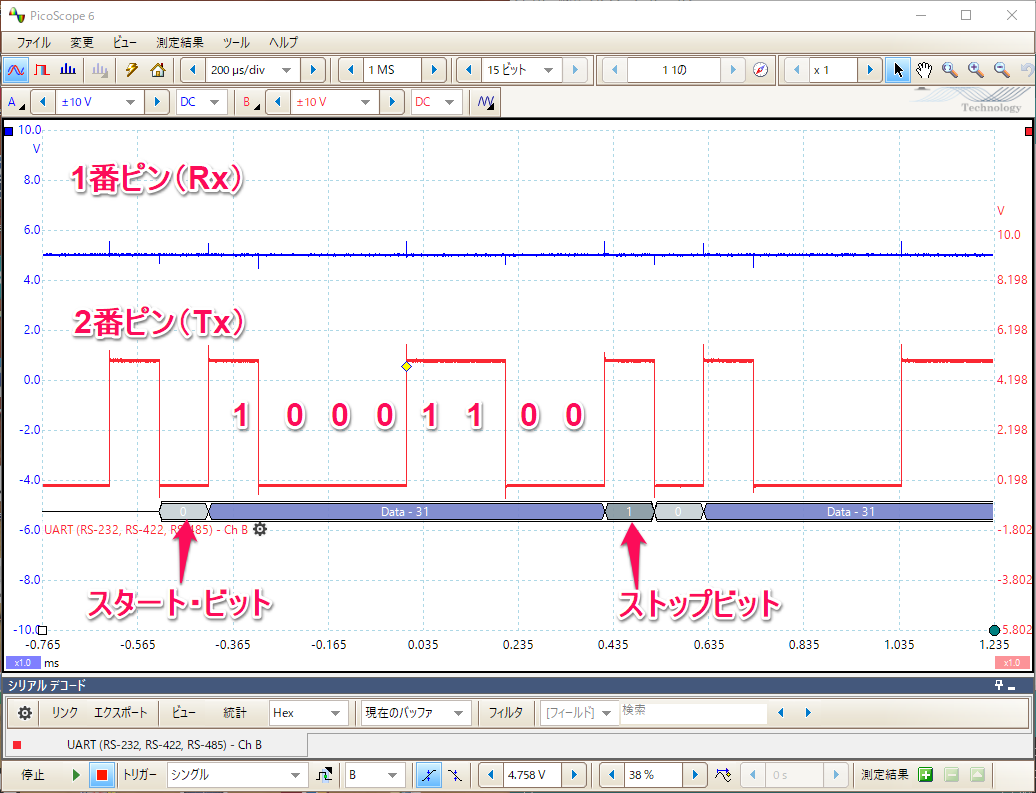
网站公告
more- Buy Personal... 25-04-19 21:29
- 10 Do's And ... 25-04-19 20:55
- How To Get A... 25-04-19 20:39
- How To Begin... 25-04-19 20:36
The Next Three Things You Should Do For RS485 Standard Success
AlbertoHuot48259950 2025.04.16 15:02 查看 : 2
For example, one of the circuits is "AB". Please note that a RS-485 network is a single pair of wires, but there is nothing in the RS-485 standard that prevents more than one RS-485 network from being used by each device. Polarity for more information. If you are running asynchronous start/stop communications (a UART) across the RS-485 wires, it simply will not work if the polarity is backwards. Again the amount of loss depends of the values of the series and parallel resistance and the loss will increase with frequency. RS-485 specifies a number of other things, but they are all electrical values. It can’t be denied that the UART IBM selected for its implementation of the serial port is considered by many as the definition of RS-232, but these parts are not in the RS-232 standard. Two circuits are for transmitting and receiving the serial data, circuit "BA" (TX data on pin 2) and "BB" (RX data on pin 3). A number of circuits are for handshaking and other functions.

However, the specifications are different in many other places. However, an incorrect value termination resistor will usually improve the signal quality compared to an unterminated network. The bias resistance needs to be taken into account when selecting the termination resistor. So are termination resistors required? RS-422's requirement is very similar except the resistors are specified as 499Ω rather than a ratio of UL. The graph in RS-422's annex A is not an absolute limit, but a guide to what should always work with cheap telephone wire. The maximum voltage between either of the wires and circuit common must not exceed 10V absolute magnitude, and voltages up to 10V cannot cause damage to the receiver. The current could cause damage to the wire, or the RS-485 port. Branching the cable to a receiver will cause secondary reflections which will cause more and unpredictable ringing of the signal. The cable's length, impedance, terminations, stub lengths, and data rate will all have an impact on signal quality. A shield could have less than 1 Ω of resistance. The signal will eventually stabilize (until the next bit transition) so the slower the bit rate the more time the signal will have to stabilize before it is sampled (usually by a UART).
Since the laptop has no connection to earth ground, there will normally be little current through this third wire. Many connectors and pin assignments exist, but there is no standard. There are other electrical characteristics in the standard, but you should be getting the idea that RS-232 specifies the connector, signals, RS485 standard and electrical characteristics. 3V are undefined by the standard. Two devices from different manufacturers that adhere to the EIA-449 standard should be able to be directly connected together. Both the generator (driver) and the receiver of all devices on the network are connected to the two wires. The designer has to define the logic function of the driver and receiver. The appendix discusses capacitance and resistance of the cable, then gives an example calculation where the capacitance of the cable per foot (30pF/foot) multiplied by the cable's length, plus the capacitance of the receiver (100pF) gives a maximum cable length of 80 feet. Its annex also states "It is desirable for proper operation over the interchange cable that the DC wire resistance not exceed 25 Ω per conductor." Any cable that meets the capacitance requirement can be used. But, the RS-232 standard allows for synchronous communications, which is not compatible with the IBM PC serial port, as well as asynchronous communications, which can be.
When configuring an IBM PC’s serial port, the parity, number of data bits, and number of stop bits must be set; therefore, many think this must be part of the RS-232 standard. The RS-232 standard includes secondary serial data circuits (secondary TX data, and secondary RX data), three clocks (timing elements) for synchronous serial data transfer, Signal Quality Detector, and more. The point-to-point full-duplex RS-485 network allows you to get the complete prototype system fully operational quickly, since it is easier to debug and more immune to certain common problems on other systems (noise problems on RS-232, turn-around problems on half-duplex RS-485, etc.). Add the cost of pulling the cable and long networks can get very expensive. Some manufacturers get around this problem by setting their receivers input threshold to a slightly biased value, such as -50mV, instead of exactly at 0V. When the wire pair is not driven, the receiver will see the input as an idle condition (binary 1). If the transmitter is turned on at the exact same time as the edge of the start bit, the receiver will see the voltage change from idle to start so the UART will always see the first start bit transmitted.
?? 0
Copyright © youlimart.com All Rights Reserved.鲁ICP备18045292号-2 鲁公网安备 37021402000770号

